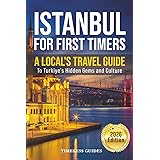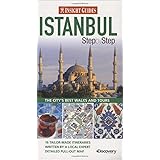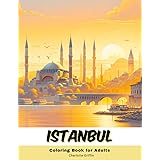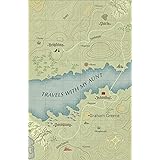Uskudar Hindus Lodge. It is located in the Solaksinan neighborhood in the Selâmsız district of Üsküdar, approximately 100 meters from the mosque that gave its name to the neighborhood. located at a distance. According to what Zâkir Şükrü Efendi reported, the lodge, which was affiliated to the Qadiriyye forder, was put into operation by Sheikh Sayyid Feyzullah Efendi al-Hindi in 1150 (1737-38). In the same source, the identities of the sheikhs who later wore the skin of the lodge are stated as follows:
Sheikh Bereket Efendi al-Hindi, Feyzullah Efendi’s caliph Sheikh Emanullah al-Hindi, Sergürûh-ı Şeyh Rahimullah Shah al-Hindi (d. 1193/1779), Sheikh Mehmed Multan al-Hindi (d. 1202/1787-88), Dervish Pir Seyyid Mehmed Efendi (d. 1207/1792-93), son of Mehmed Multan, Sheikh Abdullah Yar al-Hindi (d. 1238/1822-23), Sheikh Ali Efendi (d. 1246/1830-31), Sheikh Süleyman Khalifa Efendi (d. 1252/1836-37), Sheikh Mehmed Raşid Efendi (d. 1285/1868-69), Sheikh Hasan Veliyyüddin Efendi and Sheikh Mehmed Tahir Efendi, who assumed the mashihad in 1294 (1877). T. Zarcone argues that neither Feyzullah al-Hindi nor the five sheiks who came after him could be proven to be of Indian origin, and that these people could be Turkish sheiks of Central Asian origin who came to Istanbul via India or went on pilgrimage.
However, the fact that the Qādiriyya sect, to which the lodge is affiliated, is widespread and active in India rather than Central Asia, and the names of the sheikhs in question (Emânullah, Rahîmullah, Abdullah Yar) do not support this claim. He argues that these people may have been Turkish sheiks of Central Asian origin who came to Istanbul via India or went on pilgrimage. However, the fact that the Qādiriyya sect, to which the lodge is affiliated, is widespread and active in India rather than Central Asia, and the names of the sheikhs in question (Emânullah, Rahîmullah, Abdullah Yar) do not support this claim. He argues that these people may have been Turkish sheiks of Central Asian origin who came to Istanbul via India or went on pilgrimage. However, the fact that the Qādiriyya sect, to which the lodge is affiliated, is widespread and active in India rather than Central Asia, and the names of the sheikhs in question (Emânullah, Rahîmullah, Abdullah Yar) do not support this claim.
The Hindus Lodge, which is also mentioned by the name of its founder Feyzullah Efendi in the sources containing the inventory of the Istanbul lodges, and the day of the liturgy is stated to be Saturday, has completely disappeared and its layout and architectural features cannot be determined. The fact that the foundation works in Üsküdar dated 1924, which was transferred to İbrahim Hakkı Konyalı by Şinasi Akbatu and which is in the Archives of the General Directorate of Foundations, states that the lodge was in the form of a plot of land, which indicates that the activities of the sect here ended before the lodges were closed and the buildings vanished into history. The fact that the list of sheikhs given by Zâkir Şükrü Efendi was cut in the late 1870s also strengthens this view.
The surviving traces of the lodge consist of the tomb of Sheikh Feyzullah al-Hindi and the tomb of Abdullah Efendi, dated 1240 (1824-25), the remains of the iron-barred burial ground and some tombstone fragments around it. The witness at the head end of the sarcophagus belonging to Feyzullah al-Hindi is crowned with an inscription with thuluth calligraphy and crowned with a serpush, which is unique in Istanbul, consisting of a long arakiyye and a straight dolama destar. The toe stone, on which there is no inscription or decoration, ends with a sliced arch. It is possible that the person buried in the other grave is Sheikh Abdullah Yar al-Hindi, who is mentioned in the sheikh list of Zâkir Şükrü Efendi, who died in 1238 (1822-23). The land of the lodge and its surroundings are still occupied by the colorful dwellings of the Gypsies.
Hindiler Tekkesi, Üsküdar
Indians Lodge, Uskudar
It is also known as Feyzullah Efendi Lodge.
In addition, the appointment of a sheikh to this Kadirî Lodge was requested. In the work called Mecmua-yı Tekaya, it is registered under the name of Hindûlar Lodge and its location is shown as land. Again in this book, it is written that Veliyyüddin Efendi was the sheikh of the lodge in 1890. Accordingly, the lodge was burned or destroyed during these years.
However, it was rebuilt in wood after a short time. Tekkeye, 13 Recep 1325 (22. 8. 1907) was asked to help. The lodge, which has a beautiful view since it is located on a high place, was demolished in 1930. A large part of the cemetery on the side of the lodge has been destroyed, and some of it has recently been transferred to the burial ground prepared next to Feyzullah Efendi’s sarcophagus on the side of the street. Tekke had a close connection with the Gypsies here.
This tribe, which is said to have spread from India, was brought to Istanbul by Fatih Sultan Mehmet from Komotini and Menteşe Sanjak and settled in Edirnekapı. In the later period and XVIII. At the beginning of the century, they had spread to the inner parts of the city, especially to the Büyük Karaman and Dülgerzâde Neighborhoods around the Fatih Mosque.
However, due to the traditional crimes they committed, they were removed from these places, such as Sulukule, Yenibahçe, Ayvansaray-Lonca, Üsküdar-Selâmsız, They were settled in Kasımpaşa-Hacı Hüsrev, Beyoğlu-Yenişehir-Sazlıdere districts and Büyükdere-Çayır District. As it can be understood from this explanation, the Gypsies without Salute were sent to Üsküdar in the XVIII. They probably arrived towards the middle of the century, around 1730-35.
www.uskudar.bel.tr




















